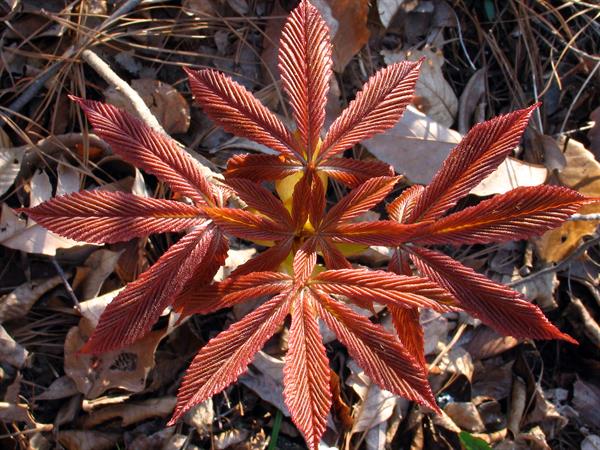
Origin/Endemic status: Endemic
Synonymy: = C, F, K1, K3, K4, RAB, Tn, Va, W, Du, Harris, & Xiang (2020), Hardin (1957a), Hardin (1957b); = Aesculus neglecta Lindl. – G, misapplied; > Aesculus georgiana Sarg.; < Aesculus octandra Marshall – S, S13
Wetland Indicator Status:
- Atlantic and Gulf Coastal Plain: FAC
- Eastern Mountains and Piedmont: FAC
Heliophily: 3
Hover over a shape, letter, icon, or arrow on the map for definition or see the legend.
 © Gary P. Fleming | Original Image ⭷
© Gary P. Fleming | Original Image ⭷ © Milo Pyne, some rights reserved (CC BY-NC), uploaded by Milo Pyne source CC-BY-NC, permission granted to NCBG | Original Image ⭷
© Milo Pyne, some rights reserved (CC BY-NC), uploaded by Milo Pyne source CC-BY-NC, permission granted to NCBG | Original Image ⭷ © Alan M. Cressler | Original Image ⭷
© Alan M. Cressler | Original Image ⭷ © J.W. Hardin | Original Image ⭷
© J.W. Hardin | Original Image ⭷ © Gary P. Fleming | Original Image ⭷
© Gary P. Fleming | Original Image ⭷ © Bruce A. Sorrie | Original Image ⭷
© Bruce A. Sorrie | Original Image ⭷ © Bruce A. Sorrie | Original Image ⭷
© Bruce A. Sorrie | Original Image ⭷ © Grant Morrow Parkins | Original Image ⭷
© Grant Morrow Parkins | Original Image ⭷ © Scott Ward, some rights reserved (CC BY), uploaded by Scott Ward source CC-BY | Original Image ⭷
© Scott Ward, some rights reserved (CC BY), uploaded by Scott Ward source CC-BY | Original Image ⭷ © Grant Morrow Parkins | Original Image ⭷
© Grant Morrow Parkins | Original Image ⭷ © Grant Morrow Parkins | Original Image ⭷
© Grant Morrow Parkins | Original Image ⭷ © Scott Ward, some rights reserved (CC BY), uploaded by Scott Ward source CC-BY | Original Image ⭷
© Scott Ward, some rights reserved (CC BY), uploaded by Scott Ward source CC-BY | Original Image ⭷ © Alan M. Cressler | Original Image ⭷
© Alan M. Cressler | Original Image ⭷Feedback
See something wrong or missing on about Aesculus sylvatica? Let us know here: (Please include your name and email if at all complicated so we can clarify if needed.)
Cite as...